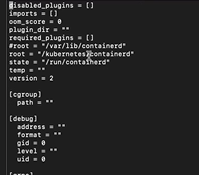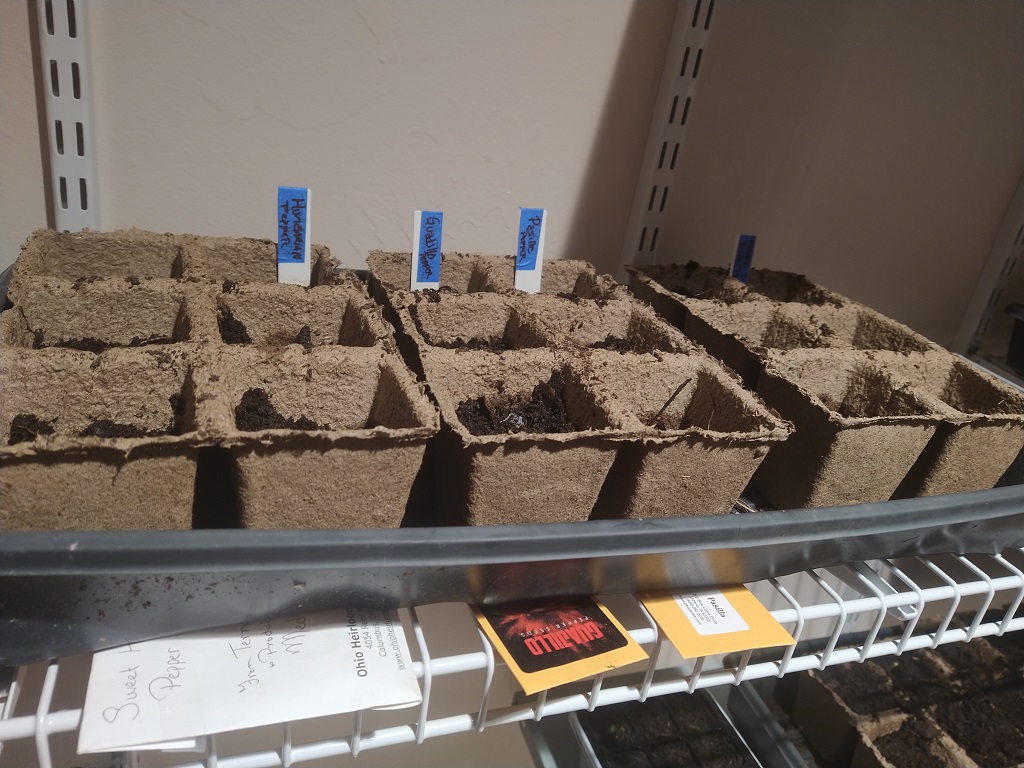The deep purple crocus are starting to bloom — and daffodils are popping up all over the place, so we should have all sorts of flowers soon.
Author: Lisa
K8s 1.24.12 Upgrade
Trying to upgrade our dev Kubernetes environment to 1.24.12 … and we encountered what seems to be a fairly common error — unknown service runtime.v1alpha2.RuntimeService
kubeserver:~ # kubeadm init
I0323 13:53:26.492921 55320 version.go:256] remote version is much newer: v1.26.3; falling back to: stable-1.24
[init] Using Kubernetes version: v1.24.12
[preflight] Running pre-flight checks
[WARNING Firewalld]: firewalld is active, please ensure ports [6443 10250] are open or your cluster may not function correctly
error execution phase preflight: [preflight] Some fatal errors occurred:
[ERROR FileAvailable--etc-kubernetes-manifests-kube-apiserver.yaml]: /etc/kubernetes/manifests/kube-apiserver.yaml already exists
[ERROR FileAvailable--etc-kubernetes-manifests-kube-controller-manager.yaml]: /etc/kubernetes/manifests/kube-controller-manager.yaml already exists
[ERROR FileAvailable--etc-kubernetes-manifests-kube-scheduler.yaml]: /etc/kubernetes/manifests/kube-scheduler.yaml already exists
[ERROR FileAvailable--etc-kubernetes-manifests-etcd.yaml]: /etc/kubernetes/manifests/etcd.yaml already exists
[ERROR CRI]: container runtime is not running: output: E0323 13:53:26.741684 55340 remote_runtime.go:948] "Status from runtime service failed" err="rpc error: code = Unimplemented desc = unknown service runtime.v1alpha2.RuntimeService"
time="2023-03-23T13:53:26-05:00" level=fatal msg="getting status of runtime: rpc error: code = Unimplemented desc = unknown service runtime.v1alpha2.RuntimeService"
, error: exit status 1
[ERROR DirAvailable--var-lib-etcd]: /var/lib/etcd is not empty
[preflight] If you know what you are doing, you can make a check non-fatal with `--ignore-preflight-errors=...`
To see the stack trace of this error execute with --v=5 or higher
We found a lot of people online with the same issue who (1) removed the config.toml and tried again, (2) changed the SystemdCGroup setting in the config, or uninstalled and reinstalled some/all of the components until it worked. Unfortunately, removing or modifying the config didn’t help. And removing and reinstalling everything wasn’t particularly appealing. However, we noticed that the same error was reported directly from containerd:
kubeserver:~ # crictl ps
E0323 13:53:07.061777 55228 remote_runtime.go:557] "ListContainers with filter from runtime service failed" err="rpc error: code = Unimplemented desc = unknown service runtime.v1alpha2.RuntimeService" filter="&ContainerFilter{Id:,State:&ContainerStateValue{State:CONTAINER_RUNNING,},PodSandboxId:,LabelSelector:map[string]string{},}"
FATA[0000] listing containers: rpc error: code = Unimplemented desc = unknown service runtime.v1alpha2.RuntimeService
Looking at the plugins, there were some in an error state
kubeserver:~ # ctr plugins ls
TYPE ID PLATFORMS STATUS
io.containerd.content.v1 content - ok
io.containerd.snapshotter.v1 aufs linux/amd64 skip
io.containerd.snapshotter.v1 btrfs linux/amd64 skip
io.containerd.snapshotter.v1 devmapper linux/amd64 error
io.containerd.snapshotter.v1 native linux/amd64 ok
io.containerd.snapshotter.v1 overlayfs linux/amd64 error
io.containerd.snapshotter.v1 zfs linux/amd64 skip
So … it seemed reasonable to look for errors in the messages log from containerd. And, yeah, we had all sorts of errors. Including a rather scary one about reformatting the file system!
Mar 23 13:24:51 kubeserver containerd: time="2023-03-23T13:24:51.726984260-05:00" level=warning msg="failed to load plugin io.containerd.snapshotter.v1.overlayfs" error="/var/lib/containerd/io.containerd.snapshotter.v1.overlayfs does not support d_type. If the backing filesystem is xfs, please reformat with ftype=1 to enable d_type support"
That would do it — we have a dedicated partition for the k8s stuff … and that volume is formatted the right way — xfs_info confirmed ftype=1
kubeserver:~ # xfs_info /kubernetes/
meta-data=/dev/mapper/kubernetes-kubernetes isize=512 agcount=4, agsize=131071744 blks
= sectsz=512 attr=2, projid32bit=1
= crc=1 finobt=0 spinodes=0
data = bsize=4096 blocks=524286976, imaxpct=5
= sunit=0 swidth=0 blks
naming =version 2 bsize=4096 ascii-ci=0 ftype=1
log =internal bsize=4096 blocks=255999, version=2
= sectsz=512 sunit=0 blks, lazy-count=1
realtime =none extsz=4096 blocks=0, rtextents=0
However containerd doesn’t really know anything about this volume, does it? The default location that containerd wants to use isn’t set up to support d_type. Editing /etc/containerd/config.toml, root now tells containerd to use our special partition for ‘stuff’ …

And we were able to run kubeadm init without error. Everything came up as it should have, and our k8s server was upgraded!
Barn Cats First Trip to the Vet
We took the cats we trapped to the vet to get neutered. They were surprisingly chill in the car — not their favorite activity, but they were quiet and looking around as we drove. Dropped them off at a low cost / feral clinic in the morning, and we picked them all up a little after 4PM.
Each kitten has two days of pain killers & need to limit their activity. A neighbor will be taking the other gray kitten (the one we call Pebbles), but Ash and Fritter will be staying inside for a few more weeks so we can take them for a booster shot next month.
They are both recovering well so far — Fritter ended up having an incision in his belly, too, so Ash is recovering quicker. But they’re both happy to curl up together and nap.
2023 Garden — Seeds Sprouting
Most of the tomatoes have sprouted, and two types of peppers. Peppers seem to take a long time to sprout! I’ve also got an arctic kiwi leafing out beautifully and several grape vines that are starting to sprout leaves.
2023 Hazelnut Flowers
River Walk
2023 Garden — Seed Starting
We got some seeds started this evening — a lot of peppers, tomatoes, and a few other plants. There are a bunch of other peppers to get going, ground cherries, cucumbers, cauliflower, broccoli, and Brussels sprouts. And, once we can start planting outside, corn, beans, peas, and all sorts of stuff for birds.
But here’s what I’ve got planted so far:
Hungarian peppers, Guadillo pepper, Pasilla pepper
Aji Lemon Drop pepper, Peri-Peri pepper, Sugar Rush Peach pepper
Black Strawberry Cherry Tomato, Brandywine Tomato, Trophy Tomato,
Rhubarb, Sugar Baby Bush Watermelon, Mary Washington Asparagus







